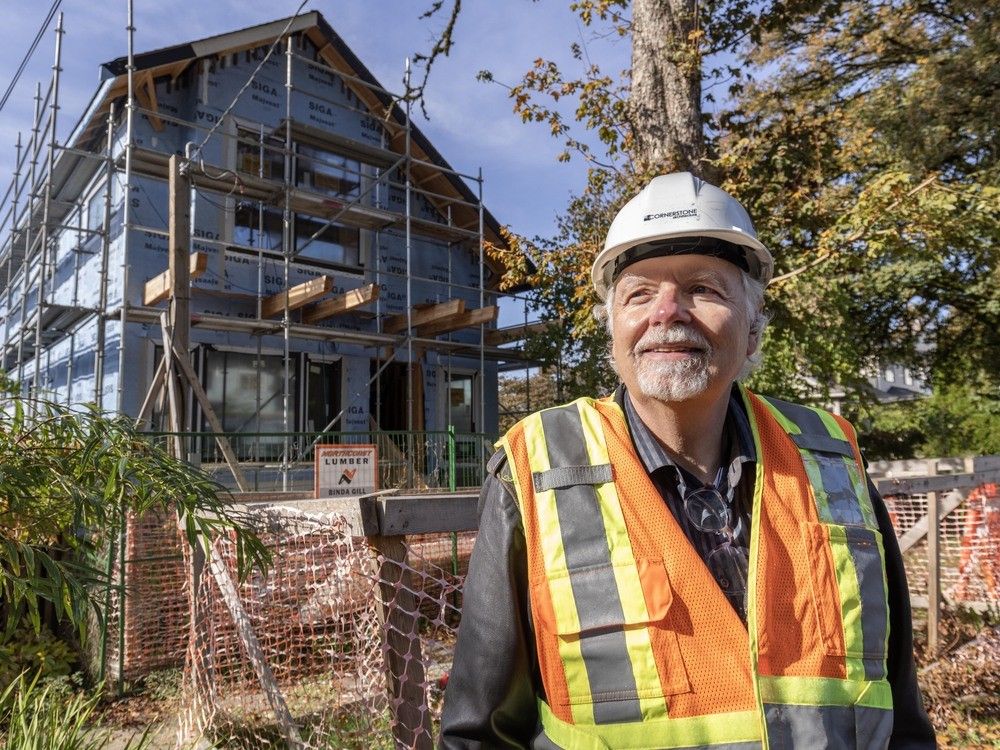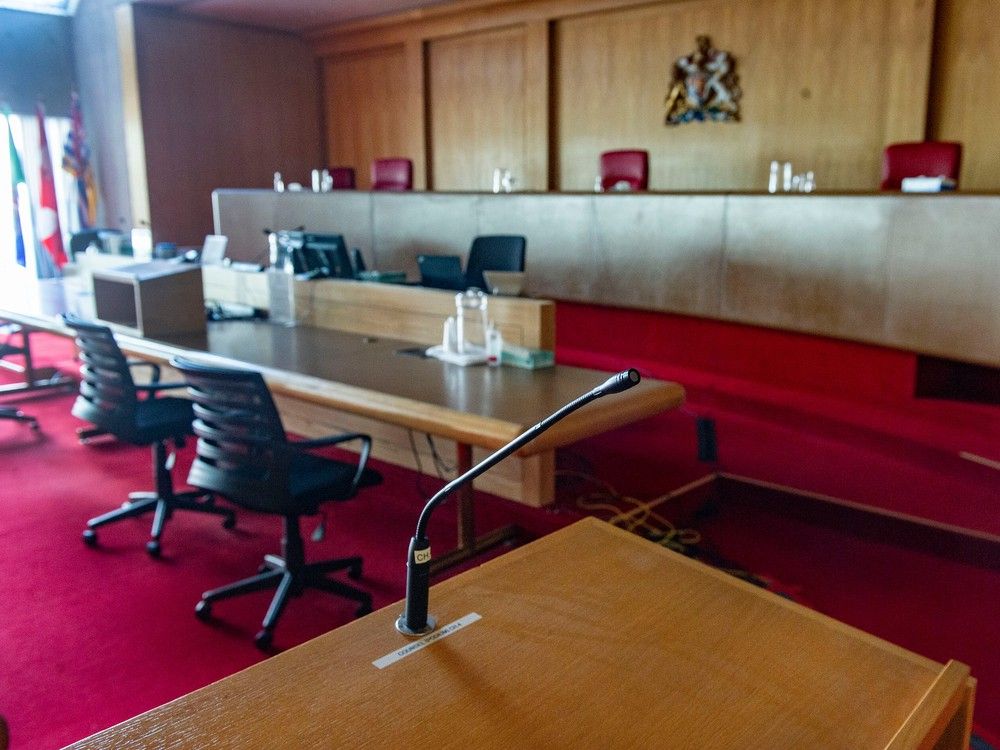Taxes comprise about one-third of a home’s price in and around Toronto and Hamilton. It's a mark of flagrantly poor governance
Published Oct 21, 2024 • Last updated 0 minutes ago • 5 minute read

About one-third of a home’s price in the Greater Toronto and Hamilton Area is a confection of taxes, some of which are passed down from developer to consumer.
And amid a years-long, and unprecedented, housing crisis in Canada’s largest city, such a debilitating tax regime speaks of flagrantly poor, if not contemptuous, governance.
Market fundamentals, like population growth — one of many — largely determine a home’s valuation, inviting the question: if not for tax greed, how much would that million-dollar home actually cost? (And, by extension, how many hundreds of dollars could be saved on rent every month?)
Advertisement 2
THIS CONTENT IS RESERVED FOR SUBSCRIBERS
Enjoy the latest local, national and international news.
- Exclusive articles by Conrad Black, Barbara Kay and others. Plus, special edition NP Platformed and First Reading newsletters and virtual events.
- Unlimited online access to National Post and 15 news sites with one account.
- National Post ePaper, an electronic replica of the print edition to view on any device, share and comment on.
- Daily puzzles including the New York Times Crossword.
- Support local journalism.
SUBSCRIBE FOR MORE ARTICLES
Enjoy the latest local, national and international news.
- Exclusive articles by Conrad Black, Barbara Kay and others. Plus, special edition NP Platformed and First Reading newsletters and virtual events.
- Unlimited online access to National Post and 15 news sites with one account.
- National Post ePaper, an electronic replica of the print edition to view on any device, share and comment on.
- Daily puzzles including the New York Times Crossword.
- Support local journalism.
REGISTER / SIGN IN TO UNLOCK MORE ARTICLES
Create an account or sign in to continue with your reading experience.
- Access articles from across Canada with one account.
- Share your thoughts and join the conversation in the comments.
- Enjoy additional articles per month.
- Get email updates from your favourite authors.
THIS ARTICLE IS FREE TO READ REGISTER TO UNLOCK.
Create an account or sign in to continue with your reading experience.
- Access articles from across Canada with one account
- Share your thoughts and join the conversation in the comments
- Enjoy additional articles per month
- Get email updates from your favourite authors
Article content
The Canadian Centre for Economic Analysis (CANCEA) revealed taxes comprised 31 per cent of a Greater Toronto and Hamilton Area home’s sticker price in 2021. But Paul Smetanin, CANCEA’s president, who estimates levies have grown to at least 33 per cent today, says they’ll keep escalating should nothing change.
“Since our report, and given that they’re up to 2021, it’s definitely due for an update because it’s higher than 31 per cent now,” Smetanin told the Post in a September interview.
To put that into context, on the purchase of a million-dollar home three years ago, buyers essentially paid $310,000 in taxes.
Smetanin says the taxes — comprising development charges, community benefit charges, a new parkland dedication levy, the land transfer tax, HST and more — “are a symptom of a broken fiscal system” in which the feds’ share of tax revenue leaves provincial and municipal governments scrambling.
Of the estimated 33 per cent tax share, the federal government reaps 39 cents on every dollar.
“When you compare taxes on a new home to the rest of the economy, it’s about 2.6 times the rest of the economy,” Smetanin said. “The situation was already indicative of the fact that governments in Canada are constantly looking for taxation readiness and it seems that, because people need homes, they become an easy target.”
By signing up you consent to receive the above newsletter from Postmedia Network Inc.
Article content
Advertisement 3
Article content
“Homebuyers are a captive audience.”
The suite of taxes are justified by governments under the “growth pays for growth” model, as it costs money to build new infrastructure and connect new homes to sewer pipes.
But “growth pays for growth” might be more fantasy than reality. Richard Lyall, president of the Residential Construction Council of Ontario, is dubious that revenue from these taxes are spent on infrastructure. He believes it’s more likely the funds are allocated towards other capital expenditures, or simply hoarded.
“A lot of these (development charges) have gone into these reserve funds now,” he told the Post in September. “Toronto’s got $3 billion-plus now sitting in a bank account that they’ve collected and haven’t spent. They’re just crushing new homebuyers and renters.”
In 2005, Ontario’s Liberal premier, Dalton McGuinty, passed the Places to Grow Act, which sought to curtail urban sprawl by mandating intensification across the province’s growth hubs. The idea was that more mixed-use, high-density housing and public transit would help the province, and especially the GTHA, grow responsibly.
Advertisement 4
Article content
But Lyall contends that relentlessly taxing prospective homeowners is counterproductive. Notably, more than 400,000 Ontarians have left the province since the first quarter of 2020, according to Statistics Canada data.
And while not everybody is leaving Ontario in search of affordable housing, a great many have their sights set on the exurbs surrounding Canada’s largest conurbation.
“It defeats the purpose of combating sprawl,” Lyall said. “(Excessive taxation) is undermining Places to Grow, and now it’s not just a housing crisis, it’s a growth management crisis.”
Mike Moffatt, an economist and senior director of the Smart Prosperity Institute — a think tank housed at the University of Ottawa that studies the intersection of the environment, the economy and housing — says housing affordability woes lopsidedly affect young people, for whom urban living has become untenable.
“High development charges in our cities aren’t just making life unaffordable,” Moffatt said over a call in September. “They’re actually pushing young people out of our cities because there’s such a massive cost savings on the tax side to move out of a place like Toronto, Brampton and so on, to a smaller market like Brantford or Woodstock.”
Advertisement 5
Article content
Unaffordable housing causes brain drain, too. Moffatt says somebody who moves to Brantford may still commute to Toronto, but they likely won’t even work remotely for a company in that metropolitan if they move interprovincially.
“If they move to Calgary or Edmonton, they’re gone, and they’ll be working in those labour markets, paying their taxes to their new provincial government,” he said. “We’re already seeing about 40,000 to 50,000 people a year leaving Ontario for other provinces.”
Calgary and Edmonton are, indeed, choice destinations for young people hailing from the Greater Toronto Area. Butler Mortgage, a GTA brokerage licensed in Alberta, has been helping originate mortgages for them across Wild Rose Country.
“Young people can still buy homes in Ottawa, just barely; they can still buy homes in Windsor and little towns like St. Thomas, and the farthest reaches of Niagara,” owner Ron Butler said in an interview earlier this fall. “But they’re mostly buying in Alberta, where you can buy a nice townhome for under $400,000.”
There isn’t a complete dearth of young buyers in expensive locales like Toronto and Mississauga — but those who do are well-heeled couples or have help from the bank of mom and dad.
Advertisement 6
Article content
Meanwhile, the majority of their peers are short shrifted, Butler says, because municipal tax revenue could be garnered through property taxes. However, Butler suspects nary a politician has enough intestinal fortitude to upset the one demographic that, statistically, has the highest voter turnout in municipal elections.
“For mayor and council, well over 50 per cent of the people who vote in those elections are over the age of 55, and they’re the most acutely aware of property taxes,” he continued.
“They’re the ones councillors and mayors are interested in pleasing, so they’re going to keep increases at the lowest possible level they can achieve, therefore, they have tried to turn the development charges into a vast source of income.”
Toronto was arguably the greatest beneficiary of Quebec’s sovereignty movement as large corporations travelled down Highway 401, with young Quebecers in tow. However, just as Montreal was once felled by the meagre prospects it offered its young, Toronto now stares down the barrel of a similar fate.
National Post
Recommended from Editorial
-

Neil Sharma: Liberals' big government has left Canadians struggling for the basics
-

Michael Higgins: Does Trudeau plan to put the squeeze on older homeowners?
Article content
.png)
 2 hours ago
7
2 hours ago
7




































 Bengali (BD) ·
Bengali (BD) ·  English (US) ·
English (US) ·